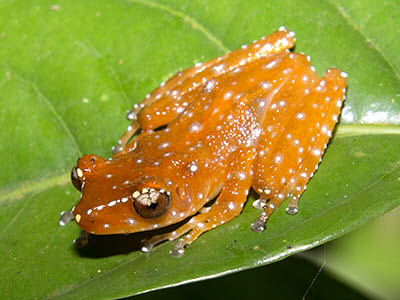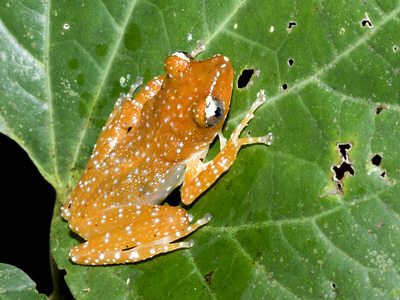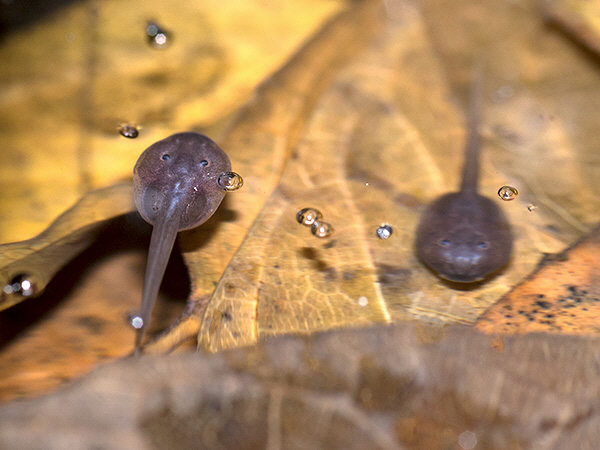
Fig 1

Fig 2

Fig 3

Fig 4
|
Family : RHACOPHORIDAE
Species : Nyctixalus pictus
Size (snout to vent) :
Female 3.8 cm, Male 3.3 cm
Play call
►
The Spotted Tree Frog,
also known as White-spotted Tree Frog, Peter's Tree Frog or Cinnamon
Bush Frog, inhabits primary forest and disturbed secondary forest, from sea level up to
at least 700
metres elevation.
It is nocturnal in habits, frequenting low vegetation where it
waits for insects and other prey to pass. Its eggs are laid in water-filled tree
hollows, or phytothelms, where the young tadpoles are able to develop in relative safety.
The
dorsal colour of this frog is unmistakable: it is generally bright orange,
but sometimes brown or yellowish-brown, and is flecked
with tiny white spots. The ventral surface is pale.
Its eyes are moderate in size, and the iris is pale above and bronze below.
Its fingers and toes are long and unwebbed, with the tips expanded into
small disks.
Its call comprises a quiet series of 'peeps', which can easily be mistaken
as that of an insect.
The species occurs in southern Thailand, Peninsular Malaysia,
Singapore, Borneo, Sumatra and the Philippine island of Palawan.
Fig 1 : Example from Johor, Peninsular Malaysia
Fig 2 : Specimen from Singapore's central forests.
Fig 3 : Tadpoles found inside a water-filled hollow, or phytothelm, in a
tree in mature secondary forest in Singapore.
Fig 4 : The tadpoles in Figure 3 were found inside this phytothelm
(marked by red arrow), one metre above the forest floor.
References :
Baker, N. & K. Lim, (Vertebrate Study Group, Nature Society
Singapore), 2008. Wild Animals Of Singapore. Draco Publishing and
Distribution Pte. Ltd.
Manthey U., Grossmann W., 1997. Amphibien und Reptilien Sudostasiens.
Natur und Tier - Verlag.
|